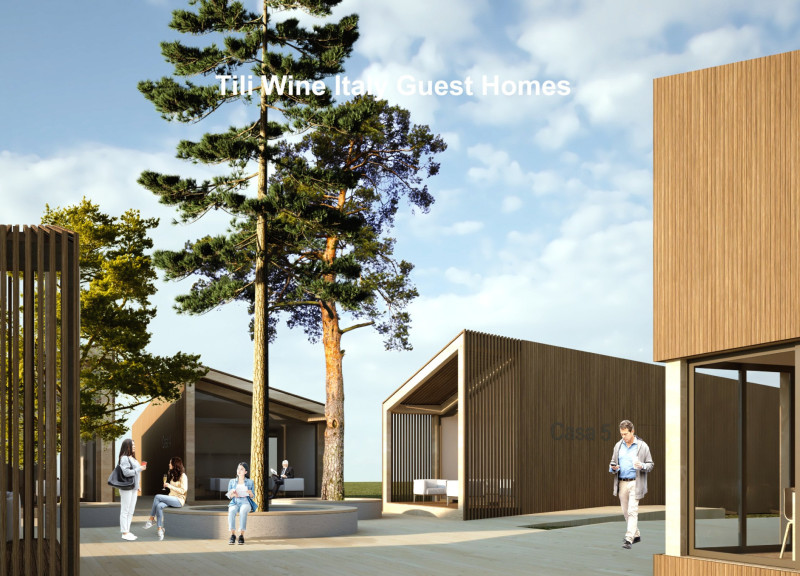5 key facts about this project
Tili Wine Italy Guest Homes is located in the beautiful Umbrian Valley, an area renowned for its green hills and rolling vineyards. The design focuses on creating an inviting space for visitors that encourages relaxation and social engagement. By connecting the architecture with its surroundings, the project offers a unique experience that highlights the local wine culture.
Central Square
At the center of the layout, a square provides a gathering space for guests, equipped with benches and shaded by trees. This area is meant to promote social interaction, allowing visitors to meet and relax together. Surrounding the square are living spaces and a restaurant, carefully positioned to provide both public and private areas. The bedrooms face away from the main activities, ensuring peace and privacy for guests, while the public spaces open towards the square.
Building Configuration
The buildings feature separate sections that are connected by a single sloped roof. This design choice adds a cohesive look to the structures while facilitating rain drainage. The different parts of the project work together to create a smooth flow, making it easy for guests to navigate. The restaurant is conveniently located to the south, ensuring quick access for those staying on-site.
Architectural Form
The design takes inspiration from the shape of wine barrels, reflecting the area's connection to winemaking. This thematic element adds a layer of meaning to the project. Each house is designed with a wooden facade and large glass openings on both sides. These features invite natural light inside and create a strong connection between indoor and outdoor spaces.
Material Context
Wood serves as the primary construction material, reinforcing the structure's strength while promoting an efficient building process. This choice connects the design to the local environment, allowing it to blend in harmoniously with the vineyards and landscape. The use of wood not only supports the design’s aesthetics but also emphasizes its relationship with the surrounding area.
The overall appearance of the project is welcoming and natural, with an engaging play of light and shadow that highlights the beauty of the landscape. Thoughtful design choices create a comfortable environment for visitors while respecting the context of the Umbrian Valley.






















































